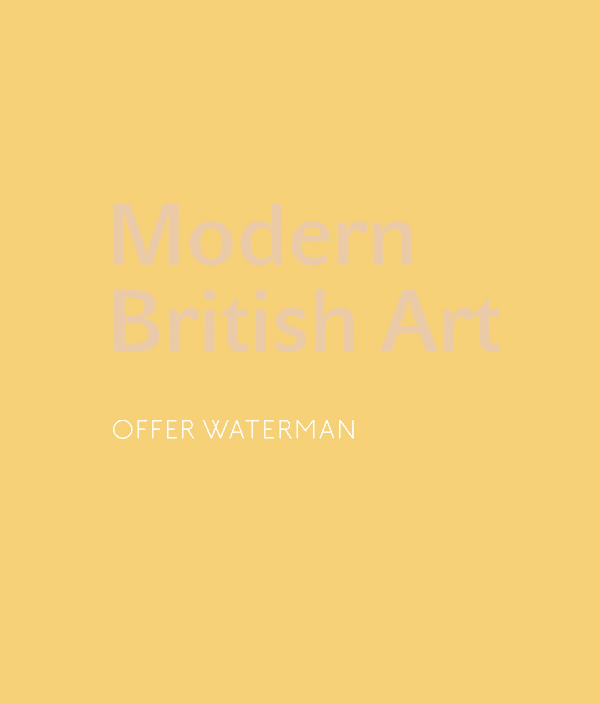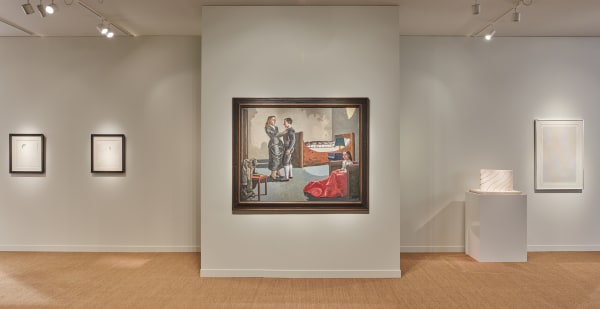Hans Coper 1920-1981
-

Art Basel, Basel
Booth E15 13 - 16 Jun 2024We are participating in Art Basel in Switzerland for the second time this June. Please email the gallery for more information about our exhibits. Artists Hurvin Anderson, Michael Armitage, Frank...Read more -

ON FOOT: An Exhibition Curated by Jonathan Anderson
18 Sep - 28 Oct 2023On Foot , curated by Jonathan Anderson, brings contemporary artists into dialogue with iconic works of modern British art. Anderson’s own fashion designs for JW Anderson and LOEWE inhabit the...Read more -

The Treasure House Fair
22 - 26 Jun 2023We are exhibiting at this new fair in Chelsea, which will be on the same site as the former Masterpiece Fair.Read more -

Art Basel, Basel
13 - 18 Jun 2023We are exhibiting at Art Basel in Switzerland for the first time this June.Read more
-

Frieze Masters
Stand B8 12 - 16 Oct 2022Exhbiting artists: Burra, Coper, Gilman, Hepworth, Hockney, Moore, Nash, Nicholson, Odundo, Perry, Rego, Rie, Riley, Scott, Sickert, Turnbull & Wallis Opening Hours: Wednesday 12 October - 11am - 7pm (Invitation...Read more -

Masterpiece, London
Stand 109 30 Jun - 6 Jul 2022We return this month to the Chelsea Royal Hospital for Masterpiece 2022.Read more
-

Masterpiece, London
27 Jun - 3 Jul 201920th Century British Art from David Jones to Howard HodgkinRead more -

Tefaf Maastricht
16 - 25 Mar 2012Opening Hours: 16 - 25 March 2012 Daily 11am - 7pm Sunday 25 March 11am - 6pm For more information: www.tefaf.comRead more
Coper was born in Chemnitz, Germany. His father was Jewish and whilst Coper was not brought up Jewish, his childhood from 1933 was spent under the threat of the Gestapo.
In 1936, Coper's father, committed suicide when Hans was aged just sixteen. Two years after his brother's emigration to the Argentine in 1937 Hans made his own way to England, reaching London in 1939. Having no home he rented a bedsit in Basywater but within a matter of weeks Britain declared war against Germany, and Hans as an alien enemy, was arrested and interned at a camp in Huyton, Lancashire. Here he managed to meet other refugee artists, most notably Jupp Dernbach who was to become a life long friend before moving to a camp in Canada.
In 1941 Coper joined the Pioneer Corps of the British Army and in June he returned to Britain. In 1943 after suffering rheumatism he was discharged from the army and went to work on a farm. His ill health continued but Coper then went to work in a factory. It was not until a meeting with William Ohly at the Berkley Gallery that he would receive his first artistic opportunity. Ohly sent Coper to the ceramic button workshop in Marble Arch to meet Lucie Rie who almost immediately gave him a job, starting what was to be a deep friendship and working relationship.
After the end of war Rie's studio which now consisted of just Rie, Coper and Dernbach, ceased making buttons and returned to its normal practice. Coper was sent to the potter Herber Matthews to learn how to throw the wheel returned proficient after exactly one weeks training. During the late 1940s Rie and Coper made cups and saucers, practical objects in order to just survive. Hans designed new seals for both him and Rie and when he made a new pot he would mark it with both of these, indicating that is was he that made the work in Rie's studio.
In the 1950s Coper began making his own pots at the encouragement of Rie. At this time pottery was dominated by Bernard Leach and the Anglo-Oriental school. Coper is now regarded as having been responsible for a new approach in the post-war period. He followed Rie's use of sgraffito but approached it in a different manner, his concern with the surface rather than decoration of a form allowed for the development of a technique in pottery. Coper would apply slip upon slip each different, so that through sanding, rubbing and working the surface he could create a sense of depth.
In 1959 he set up studio at the Digswell arts Trust, Welwyn Garden City and began to exhibit prolifically both in the U.K and internationally. Now that he had more space Coper began work on large scale pieces such as his candlesticks for Coventry Cathedral which accompany Henry Moore's altar at St Stephen Walbrook church, City of London. Throughout the 1960s Coper taught at Camberwell and the Royal College of Art and in 1967 he moved to Somerset with his wife, the photographer, Jane Gate and continued to teach and work fruitfully.
In the mid-1970s Coper began to suffer acute pain and his remaining seven years were spent in the knowledge that he would die from his illness. This encouraged Hans to continue working in order to refine his work and the approach to form that he had cultivated throughout his lifetime. As his illness increased he could only use one hand, whilst the other held the piece, making the process extremely difficult and frustrating. In 1981 he died at home, with Rie and his wife by his side. Up until this point he had attempted to write his ideas however, after growing frustrated by this he burned all of these.
-

25 Years: Modern British & Contemporary Art
AVAILABLE 2021Hardback, 104 pagesRead more
Publisher: Offer Waterman
ISBN: 978-1-9996598-2-0
Dimensions: 27.5 x 23.5 cm -

Modern British Art 1913-2013
SOLD OUT Modern British Art, 2014Softback, 96 pagesRead more
Publisher: Offer Waterman & Co
Dimensions: 27.0 x 23.0 cm -

Modern British Art 2012
AVAILABLE 2012Hardback, 80 pagesRead more
Publisher: Offer Waterman & Co
Dimensions: 27.0 x 23.0 cm -

Modern British Art 2016
AVAILABLE 2016Paperback, 104 pagesRead more
Publisher: Offer Waterman
ISBN: 978-0-9574188-4-4
Dimensions: 27 x 23 cm
-

A film of the exhibition 'On Foot'
By NOWNESS September 27, 2023Nowness have made a film of our current exhibition On Foot. WATCH THE FILM Production Company Agile Films Directed by Emile Rafael Produced by Sarah...Read more -

Masterpiece London
June 28, 2014We are currently exhibiting at Masterpiece London. For more information about visiting the fair, please visit the website: www.masterpiecefair.comRead more




















